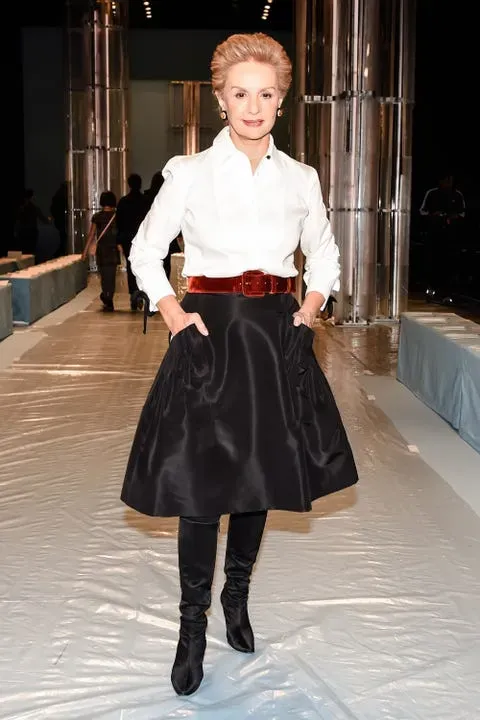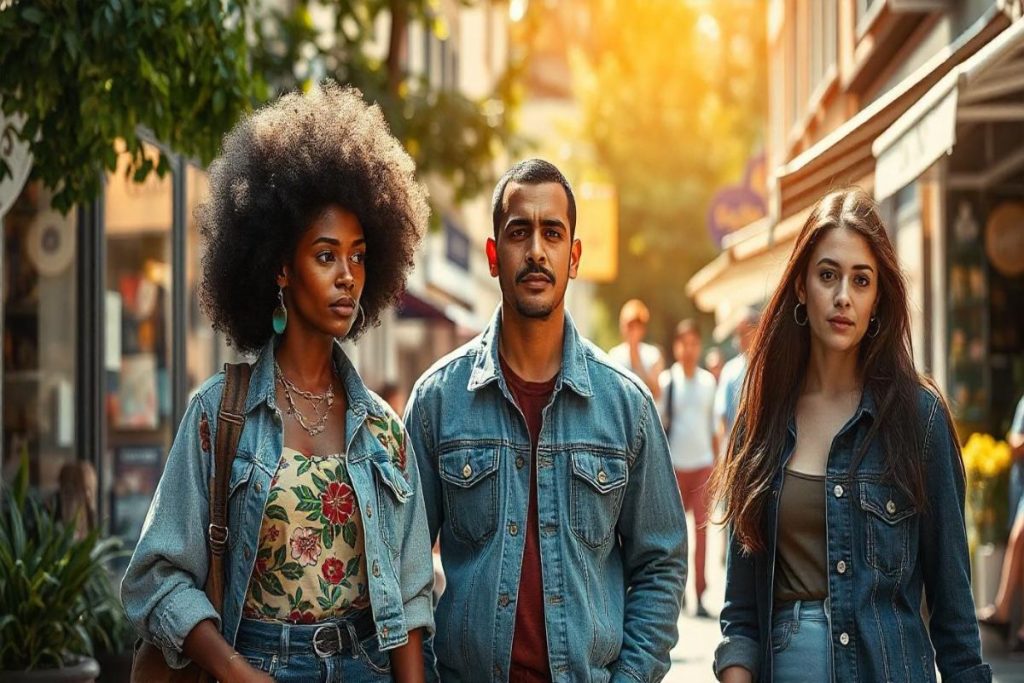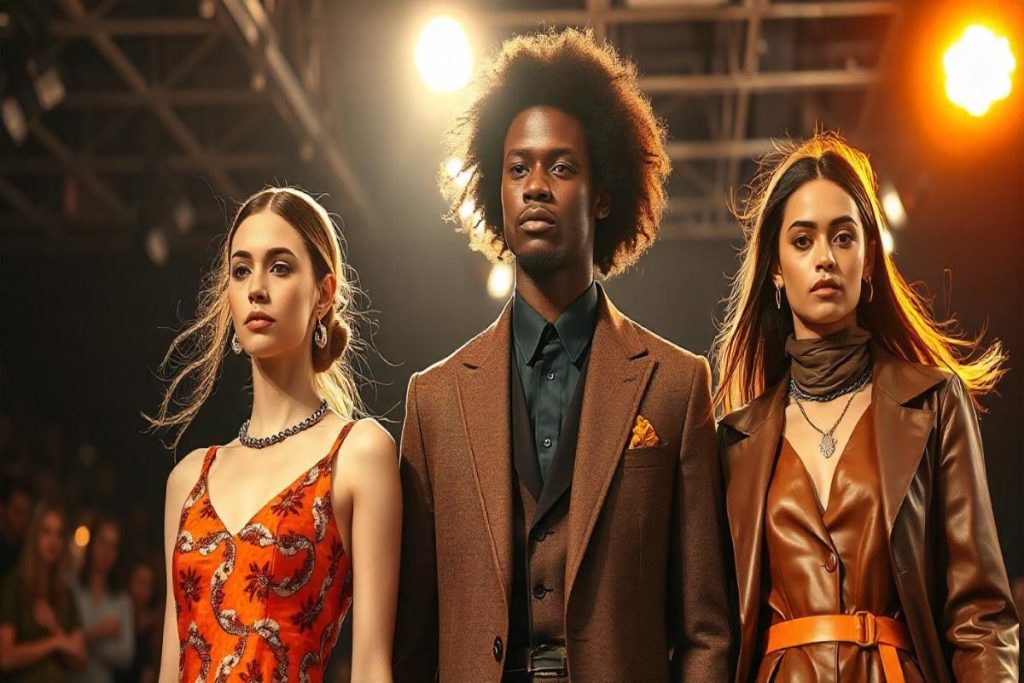The emergence of female designers high street is a transformative trend revitalizing the iconic British high street fashion landscape. Redefining the narratives of women in fashion, these talented individuals bring fresh perspectives and innovative ideas to brands that have become staples in our wardrobes. Recently, Jacqui Markham, previously the design director at Topshop, stepped into the creative director role at Whistles, signaling a significant shift towards leadership roles for women in the industry. Meanwhile, the promotion of Maddy Evans to director of womenswear at Marks & Spencer highlights a commitment to enhancing women-centric design. As these bold female figures take center stage, the once-stagnant fashion scene is poised for a much-needed revival, embracing the creative potential that comes from understanding female consumers at a deeper level.
Female creatives are swiftly becoming the backbone of the modern retail landscape, particularly on the high street. This surge of women in prominent design positions at global brands reflects a broader movement towards inclusivity and representation in fashion. With a focus on accessible and stylish options, brands like Whistles and Marks & Spencer are benefitting from fresh leadership that understands the nuances of female consumers’ desires. The winds of change are evident as former luxury designers, such as Clare Waight Keller from Givenchy, seamlessly transition into the high street arena, highlighting an evolving dialogue between high fashion and accessible styles. As these female designers continue to shape the future of retail, the intersection of women’s perspectives and market needs will undoubtedly lead to a more vibrant and relevant high street.
The Rise of Female Designers on the British High Street
The British high street is witnessing a significant transformation, largely propelled by the creative vision of female designers. High-profile appointments, such as Jacqui Markham as the new creative director at Whistles, signify a pivotal shift in how brands approach women’s fashion. This move not only revitalizes Whistles, a brand that thrived in the 2010s but has since struggled to maintain its allure, but it also reflects a broader trend of placing women at the forefront of fashion design. With Markham’s extensive background at Topshop and Asos, there’s much anticipation regarding her ability to resonate with consumers through relatable designs that reflect their daily lifestyles.
These inspirational female leaders, alongside figures such as Maddy Evans at Marks & Spencer, are striving to create environments where design is more empathetic and relatable. The concept of “women designing for women” goes beyond mere representation; it enriches the brand narrative, creating spaces where female designers can connect deeper with their customers, offering styles that meet practical needs while emphasizing sophistication.
The revival of the British high street depends heavily on acknowledging and empowering talented female figures who understand the nuances of women’s shopping habits. Retail consultants like Catherine Shuttleworth assert that women inherently comprehend the psyche of their fellow shoppers better than anyone, positioning them uniquely to transform brands in today’s market. This wave of female influence arguably empowers brands to push the envelope, encouraging innovative approaches in product design and marketing strategy. As the high street landscape evolves, companies are recognizing that catering to the preferences of their primary demographic—women—can lead them to renewed success and customer loyalty.
Revitalizing Brands: Lessons from Topshop’s Female Leadership
Topshop undoubtedly remains a cornerstone of British high street fashion, revered for its ability to set trends and resonate with young consumers. However, after its challenging transition to online sales, the anticipated in-store revival comes with high expectations. The appointment of a gender-diverse management team reflects a concerted effort to revitalize the brand’s image, repositioning Topshop as a relatable entity for fashion-forward individuals. Managing director Michelle Wilson emphasizes the importance of this diverse approach in crafting a product range that mirrors London’s vibrant fashion scene.
The return of Topshop, beginning with a pop-up event, illustrates the delicate balance brands must maintain between honoring their heritage and evolving with contemporary styles. There is a growing recognition that nostalgia alone won’t suffice in attracting returning customers. Joy Montgomery’s insights reinforce the notion that while it’s beneficial to learn from past successes, brands must innovate through fresh perspectives and designs that resonate with today’s discerning shoppers.
Moreover, this emphasis on diverse female leadership is crucial not only for brand identity but also for the sustainability of trends within high street fashion. The rich archives of brands like Topshop serve as a powerful resource, but as Montgomery wisely points out, the challenge lies in layering new ideas onto their legacy. Engaging women in key design roles will allow brands to reinterpret those archives through a modern lens, creating fresh and accessible offerings while appealing to new generations of shoppers. As the brand works to climb back into the public’s favor, maintaining this approach could very well secure its place on the high street for years to come.
Whistles: A New Era Under Creative Leadership
Whistles stands at a crossroads, seeking to rejuvenate its identity under the creative guidance of Jacqui Markham. The brand, known for its minimalist yet stylish offerings, was once a staple of the British high street. However, as the retail landscape grew more competitive, Whistles struggled to differentiate itself. Markham’s arrival brings new energy and a vision that aligns with contemporary consumer demands, indicating a promising future for the brand. The emphasis on understanding the unique needs of female shoppers positions Whistles to reclaim its status among the fashion-forward.
The significance of having female designers at the helm cannot be overstated, especially in a market where the interests of women are paramount. Markham’s understanding of fashion and her ability to curate collections that resonate with modern-day women will play a critical role in Whistles’ revival. The insights from product director Camille Sullivan regarding lived experiences highlight the importance of relatability in fashion design, indicating that collaboration with diverse female voices will be instrumental in crafting collections that appeal to a broader audience.
Marks and Spencer: Innovating Womenswear with Female Leadership
Marks & Spencer has long been synonymous with quality and timeless fashion. The appointment of Maddy Evans as the new director of womenswear symbolizes a strategic shift towards a more consumer-centric approach, especially within the realm of women’s fashion. By harnessing Evans’ insights and experiences, the brand aims to redefine its offerings, ensuring that they resonate with contemporary educational and lifestyle needs. The focus on women’s needs—both practical and aspirational—will undoubtedly enrich the brand’s womenswear line.
As Marks & Spencer navigates the complexities of the modern retail environment, the contributions of female leadership are critical. According to both Evans and Sullivan, fostering an environment where women lead the design narrative allows for innovative products that truly reflect the preferences and demands of female consumers. The revival of womenswear lines at Marks & Spencer not only aims to boost sales but also hopes to set a benchmark for how high street brands can flourish through thoughtful, inclusive design practices.
Emerging Trends: Female Designers and High Street Dynamics
The dynamic between emerging female designers and traditional high street fashion is evolving, showcasing a noteworthy shift in leadership styles and creative visions within the industry. Designers such as Clare Waight Keller at Uniqlo and Jacqui Markham at Whistles are reshaping narratives by drawing on their unique perspectives to drive success in high street fashion. This new era indicates an acknowledgment that the future of fashion needs diverse voices to capture a broad audience, making brands more relatable and desirable.
The cross-pollination of ideas between high street and high fashion is breaking down barriers, allowing for a richer tapestry of creativity. Female designers are experimenting with aesthetics while injecting a sense of functionality and purpose into collections. This trend signifies that female designers can influence not only high street fashion but also contribute unique ideas that permeate through various market segments, ultimately enriching the fashion landscape. As brands respond to consumer desires for authenticity and connection, the female designers leading this charge are set to propel high street fashion into thrilling new territories.
The Role of Nostalgia in British High Street Fashion
Nostalgia plays a powerful role in shaping consumer experiences on the British high street. Brands like Topshop, with their rich heritage, hold deep emotional resonance for shoppers looking for connection and familiarity. As brands revive past styles, they must also blend nostalgia with modern sensibilities to create collections that appeal to both loyal customers and new generations. The balancing act requires depth and creativity, allowing themes from past collections to inspire fresh interpretations that captivate shoppers anew.
However, relying solely on nostalgia poses risks, as emphasized by fashion critics like Joy Montgomery. There’s a danger of creating products that fail to meet contemporary expectations, potentially leading to consumer disengagement. They must ensure that while they draw from their archives, they also innovate to engage with consumers on multiple levels. This nuanced approach will determine whether nostalgia becomes a powerful asset or a hindrance as brands navigate the competitive high street.
The Intersection of High Fashion and High Street Market
The boundary separating high fashion from the high street is increasingly blurred as brands seek to capitalize on the unique expertise of designers. The movement of celebrated designers like Waight Keller into high street roles represents a significant trend that benefits both sectors. High fashion can infuse high street offerings with creativity and prestige, while high street brands gain a competitive edge through nuanced design insight. This mutualism creates an atmosphere where innovation thrives, allowing brands to connect with consumers on deeper levels.
This shift reflects a broader realization within the fashion industry that inclusivity and diversity are essential for resonance in the marketplace. By inviting female designers to share their visions, brands acknowledge the multifaceted nature of what women desire from their clothing. Whether it’s through functionality, style, or comfort, having female designers at the forefront ensures that high street offerings are simultaneously chic and relevant. In this way, the collaboration between high fashion and high street creates a rich and compelling narrative that speaks volumes about the future of the industry.
Looking Ahead: The Future of Female Designers in Fashion
The future of female designers in fashion holds great promise as the industry increasingly recognizes their indispensable contributions. As brands like Whistles, Marks & Spencer, and Topshop embrace gender diversity at the leadership level, they set an example for others to follow. Not only does this shift empower women in fashion, but it also encourages a more balanced perspective in design strategies that resonate with consumers. With more women leading companies and shaping industry narratives, insights from female perspectives are bound to drive fashion forward.
Moreover, the increase in visibility of female designers within the high street space fosters a culture of mentorship and collaboration, which is essential for nurturing upcoming talent. By creating platforms for rising stars, the industry can ensure that a diverse array of voices continues to contribute to its evolution. As they navigate challenges and opportunities, female designers are set to bring fresh energy and creative solutions to the high street, steering the fashion world into a vibrant and inclusive future.
Frequently Asked Questions
How are female designers revitalizing British high street fashion?
Female designers are bringing fresh perspectives to British high street fashion by understanding the unique needs of women. With recent appointments like Jacqui Markham at Whistles and Maddy Evans at Marks & Spencer, these designers have the lived experiences that resonate with consumers, driving brand revival and innovation.
What impact did Jacqui Markham’s appointment as creative director at Whistles have on female designers in high street fashion?
Jacqui Markham’s appointment as creative director at Whistles signals a commitment to ‘women designing for women’ in British high street fashion. Her leadership is expected to help the brand distinguish itself in a saturated market, reflecting a growing trend of female designers influencing high street styles.
Why is the rise of female designers important for brands like Marks and Spencer and Whistles?
The rise of female designers is crucial for brands like Marks & Spencer and Whistles because they bring insights into women’s shopping behavior and preferences. Female leadership in design can foster more relevant and appealing collections, driving customer engagement and loyalty in the competitive world of British high street fashion.
What role does nostalgia play in the revival of high street brands like Topshop in the female designer sector?
Nostalgia plays a significant role in the revival of brands like Topshop, but it cannot be solely relied upon. As seen with the brand’s upcoming pop-up store, the presence of female designers like Michelle Wilson ensures that while heritage is honored, innovative and contemporary designs are also prioritized to attract modern consumers.
How does the appointment of female designers reflect the changing landscape of fashion on the British high street?
The appointment of female designers to key positions in British high street fashion indicates a shift towards greater gender diversity in fashion leadership. It highlights an industry trend where brands are embracing the expertise women bring, not just in design but also in understanding market demands and consumer behavior.
What challenges do female designers face in high street fashion, particularly in relation to brands like Uniqlo?
Female designers in high street fashion face challenges including being pigeonholed into utilitarian roles or mass-market designs. Brands like Uniqlo, led by Clare Waight Keller, showcase how female perspectives can elevate fashion, but there remains a risk of limiting their creative expression within traditional high street frameworks.
How does the leadership of women in fashion influence consumer trends in high street brands?
The leadership of women in fashion heavily influences consumer trends by providing a relatable and authentic voice. As female designers understand their audience’s needs, brands like Whistles and Marks & Spencer can create collections that resonate with consumers, leading to increased sales and brand loyalty.
What future possibilities exist for female designers on the British high street based on current trends?
Current trends indicate a promising future for female designers on the British high street, as brands increasingly seek diverse talent to remain relevant. The blurring lines between high fashion and high street, illustrated by moves from luxury houses to accessible retailers, suggest that female designers will continue to shape the narrative of contemporary fashion.
| Brand | Current Female Leaders | Recent Fashion Trends | Challenges and Strategies |
|---|---|---|---|
| Whistles | Jacqui Markham (Creative Director) | Viral items (e.g., Uniqlo’s red socks) | Need to stand out in a saturated market |
| Marks & Spencer | Maddy Evans (Director of Womenswear) | Popular demand for accessible fashion | Understanding customer needs from a female perspective |
| Uniqlo | Clare Waight Keller (Creative Director) | High-quality, accessible designs | Balancing heritage and modern appeal |
| Topshop | Michelle Wilson (Managing Director) | Nostalgic pop-up events | Relying on brand essence and innovation |
Summary
Female designers on the high street are reshaping the fashion landscape, bringing fresh perspectives and innovative approaches to well-established brands. With experienced leaders like Jacqui Markham at Whistles and Clare Waight Keller at Uniqlo, the high street is poised for a renaissance. These talented women not only understand what female consumers want but are also enhancing women’s roles in the industry. As we witness a convergence between high street and high fashion, the future looks promising for female designers carving their niche and redefining trends in accessible fashion.



